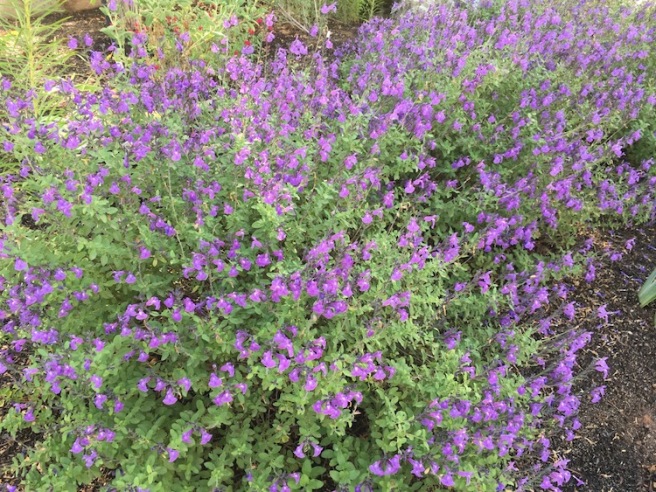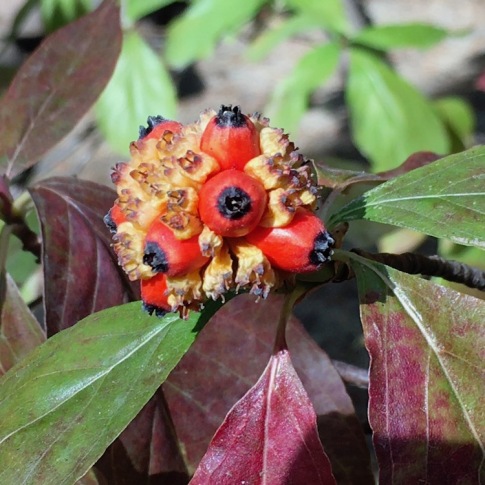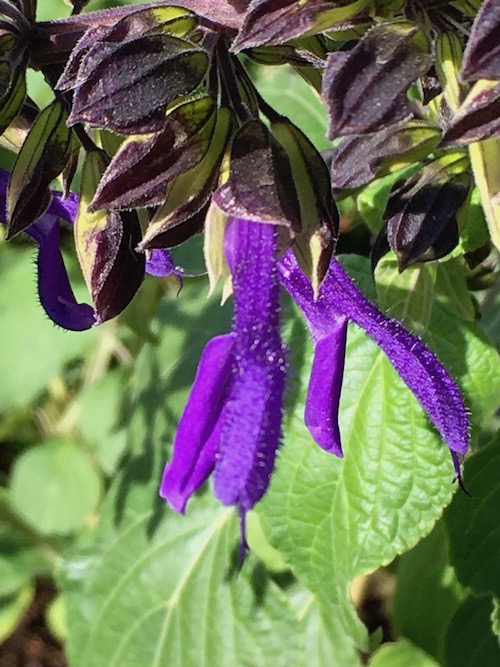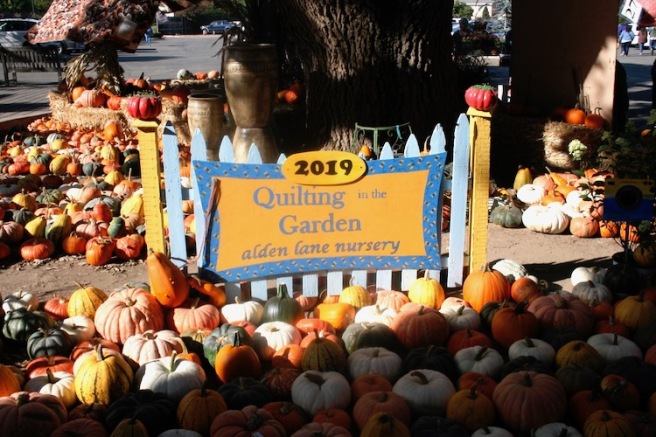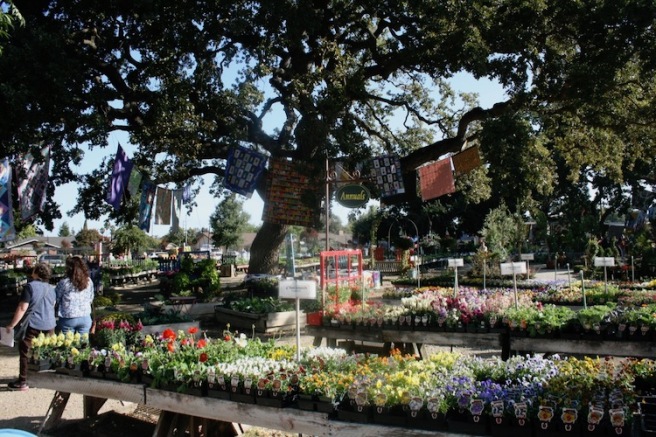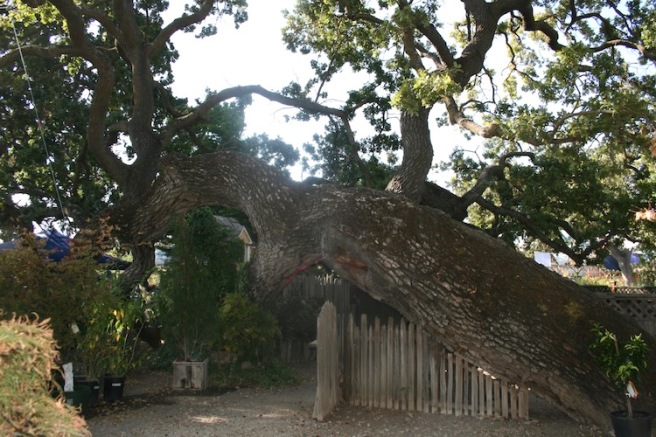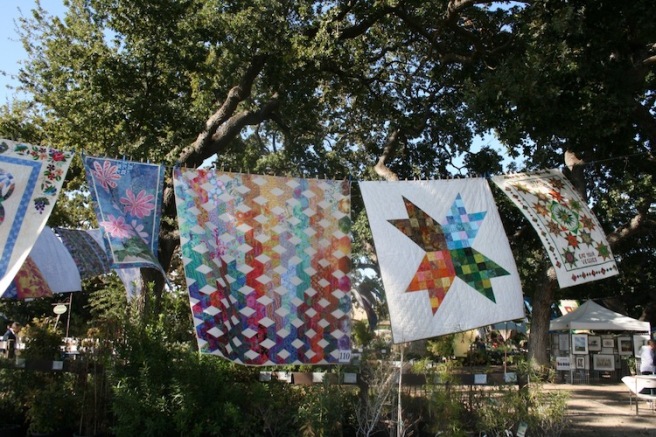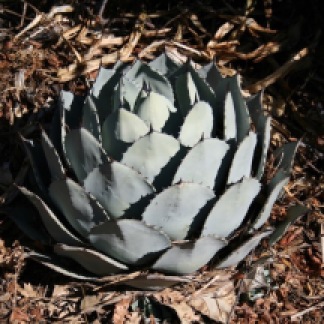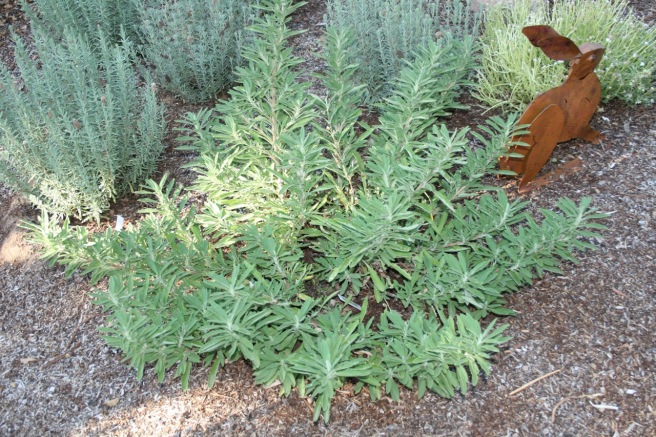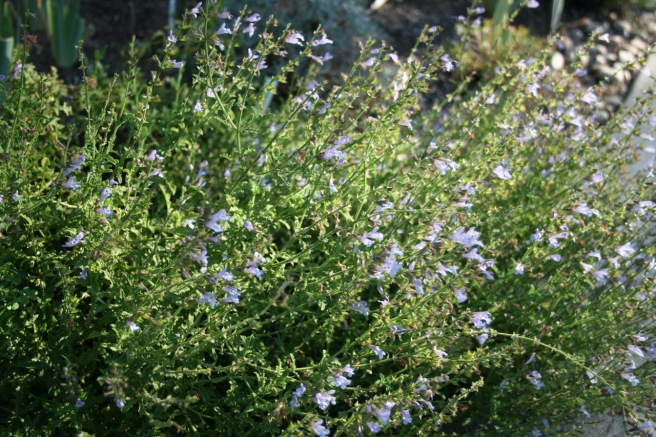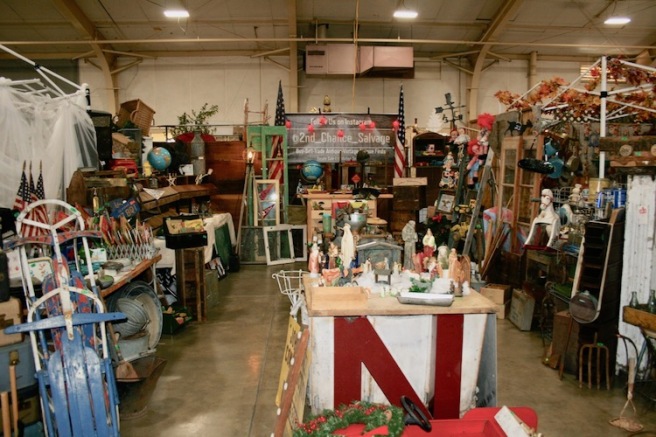A few years ago while searching for garden tours on the internet I ran across the site for the Bringing Back the Natives Tour which takes place annually in the East Bay. Their site http://www.bringingbackthenatives.net is the home of not only the 14 year old tour, but also offers many resources for gardeners interested in native plants, water conservation, backyard wildlife habitats and much more. The May 2018 self guided tour included forty Alameda and Contra Costa County gardens, workshops and a native plant sale. Unfortunately May is a month overflowing with garden touring and educational opportunities (not to mention an intensive work time in my own garden) and I have yet to be able to participate in the tour.
Their regular and very informational emails led me to sign up for a class last week end entitled Gardening With Nature in Mind and taught by environmental educator Judy Adler at her half acre garden in Walnut Creek. As with all Bay Area road trip type classes, it was an early departure from Fresno and a long day but well worth the drive.
We were a small class which allowed plenty of time for questions and to get to know each other’s diverse gardening interests and experiences. Judy’s home landscape functions as suburban farm, an ecological and horticultural laboratory, a wildlife habitat and a community educational resource. Her passion for nature and sharing the interconnectedness of all facets of the natural world is boundless. A walk around her garden and her so called “trespass area” offers learning opportunities and examples of sustainable gardening practices in play at every turn.

Judy’s home is one of two in a cul-de-sac adjacent to a Walnut Creek public school. Across the street lies an open area, once a mustard field, that belongs to the school district. Since 1996 Judy has shaped a half acre plot of this land into a biodiverse dry garden which reflects what is able to survive with only rainfall. In the shade of the oaks we learn about the Mediterranean Climate range across the world–areas marked by dry, hot summers and mild, wet winters. The logs you see “planted” in the ground are examples of hugelkulture, a horticultural technique where a mound created by decaying wood debris can produce a planting area with improved soil fertility, water retention and soil warming.

The spines on this acacia species native to Chile provide cover and protection for birds and other wildlife.
Berries of the evergreen toyon provide winter food for birds and the juicy fruits of the prickly pear has been food for both wildlife and man through the ages.

Piles of brush and trimmings are left to decay in place, offering additional wildlife habitat as they are on their journey to nourishing the soil beneath.

This area has many colonies of milkweed. As we encounter stands of now desiccated milkweeds plants, Judy shares a photographic life cycle book of the plants and the monarch butterflies they feed that she has produced as an educational resource.
Of course the area includes lots of spiky things–Judy’s lesson here was to make sure you know the mature sizes of those cute little succulents you put in the ground!

Looking back toward the hills behind the dry garden. In the foreground are stands of California native rye, Leymus triticoides, which has been fashioned into a maze for young gardeners to explore.

A short walk back up the street to Judy’s home offered a chance to admire the sculptural quality of the trunks of this group of manzanita.
Prior to class Judy had sent us all electronically a lot of reference material, including a plant list of her garden, a list of resources covering topics such as bee-keeping and permaculture and much more plus a little pre-class homework to learn to calculate rainfall volumes. Judy is all about the water. The fact is that she has very little to work with and is committed to being the best steward of her little piece of the earth’s resources, as well as carrying that message to the general public. I admitted to not doing my homework as our class moved into a discussion of rainwater harvesting. Had I done the math I would have not been so surprised to learn that a roof surface of 2500 square feet could yield almost 30,000 gallons of rainwater in an area receiving only 18 inches of rain a year!

Here you see Judy as she explains the roof rainwater harvesting system she built with the help of friends and neighbors. The addition of a product called Gutter Gloves as an initial filtering agent allows rainwater to flow off her roof surfaces free of large debris, into a PVC pipe system that then provides a second filter and ultimately routes the water into one of the three 3,000 gallon water tanks just visible over her shoulder. The system is pressure operated with no pump involved. She also uses recycled fire hoses to deliver water to various parts of her landscape!


A basic botany lesson introduces us to the characteristics of different pollinator insects and blooms in Judy’s pollinator garden give her an opportunity for a pop quiz to review what we have just learned.

This 1,500 gallon pond incorporates an upper tier bio bog to aid oxygenation. Judy shared that this pond teems with wildlife throughout the year and provides her with a wonderful observation spot.

This small greenhouse is in full sun part of the day. These recycled containers are filled with harvested water which warms in the daytime and heats the greenhouse when temperatures cool in the evening.

Raised beds with the remnants of the season remain as food and shelter for birds and insects.

A pergola to the back patio supports native grape vines. The bright white foliage is a woody perennial shrub called germander which sports bright blue flowers in spring.

The resident hens participate in the patio goings-on. Judy uses the coop’s manure to enrich needy soil and enjoys both the eggs and the company her girls give her. The chickens are all rescues and relish visitors to the garden as they know there will be a little treat for them!

During our time with Judy she touched on many topics of interest to gardeners and wildlife lovers alike. Rather than an in depth coverage of any one facet we were able to get a little taste of a diverse range of related subjects and the resource materials Judy shared offered avenues for further exploration on an individual basis.
While my own gardening aesthetic probably will never rise to the level of sustainability Judy practices I absolutely admire the fact that she very clearly WALKS the TALK in all aspects of her life. Her enthusiasm, matter of fact style and plain language is appealing to adults and children alike and I am sure everyone in my class went home having learned at least one new thing–I know I did.
Leaving her garden you see this diminutive art piece with arms raised to the heavens. It is a perfect representation of the joy and peace Judy experiences by observing and being connected with life in all its forms. The art piece was the inspiration for her ebullient garden gate created by metal sculptor Mark Oldland.
Please visit http://www.diablonature.org to learn more about Judy Adler’s life and work.


